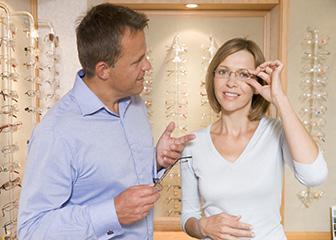Summary

| Quick Facts: Dispensing Opticians | |
|---|---|
|
$32,940 per year
$15.84 per hour |
|
| High school diploma or equivalent | |
| None | |
| Long-term on-the-job training | |
| 62,600 | |
| 29% (Much faster than average) | |
| 18,100 | |
What Dispensing Opticians Do
Dispensing opticians help fit eyeglasses and contact lenses, following prescriptions from ophthalmologists and optometrists. They also help customers decide which eyeglass frames or type of contact lenses to buy.
Work Environment
Some opticians work in stores that sell glasses, contact lenses, and other optical goods. These stores may be stand-alone businesses or parts of larger retail establishments, such as department stores. Other opticians work as part of a group optometry or medical practice.
How to Become a Dispensing Optician
Opticians typically have a high school diploma or equivalent and some form of on-the-job training. Some states require opticians to be licensed.
Pay
The median annual wage of opticians was $32,940 in May 2010.
Job Outlook
Employment of opticians is expected to grow by 29 percent from 2010 to 2020, much faster than the average for all occupations. An aging population is expected to lead to greater demand for eye care services.
Similar Occupations
Compare the job duties, education, job growth, and pay of dispensing opticians with similar occupations.
O*NET
O*NET provides comprehensive information on key characteristics of workers and occupations.
Contacts for More Information
Learn more about dispensing opticians by contacting these additional resources.






